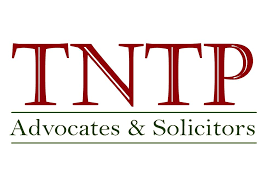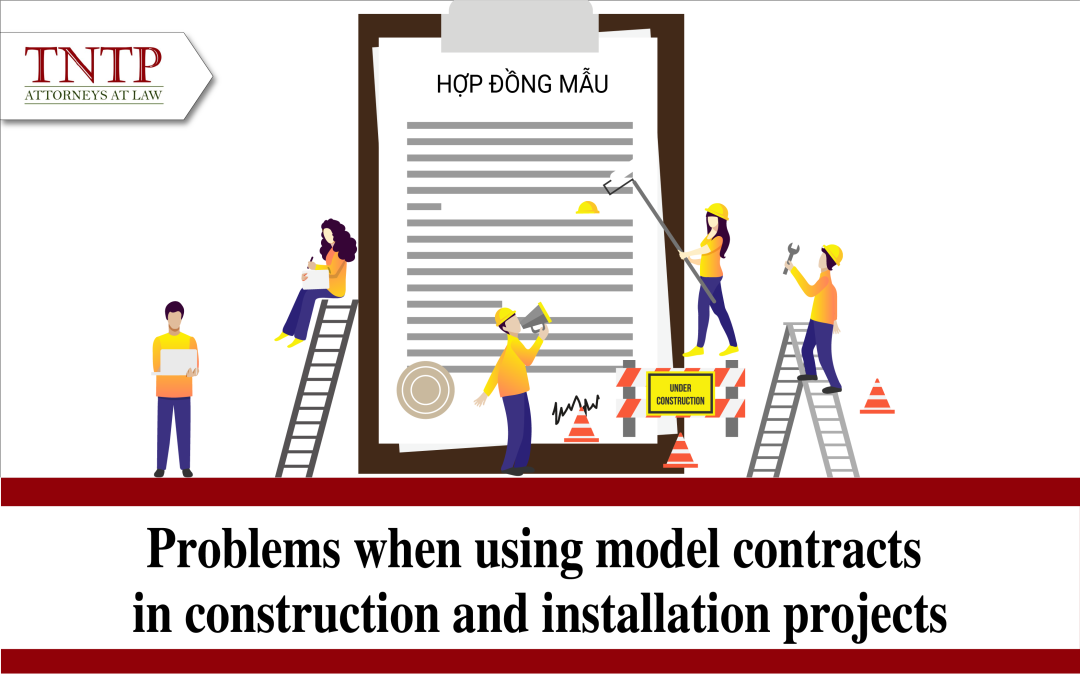Standard contracts are widely used in the construction sector as a standardized tool to reduce drafting time and costs. However, practice shows that using standard contracts without proper adjustments can lead to serious consequences, affecting the rights and responsibilities of the parties involved. Through this article, TNTP presents to our valued readers the article “Common issues when using standard contracts in construction projects”.
1. What is a standard contract in construction projects?
• A standard contract in construction projects is a pre-drafted agreement containing set-up terms and conditions, commonly applied to various construction projects. It serves as a tool to standardize contracts, helping parties save time and costs.
• Standard contracts are often used as a reference framework, encompassing basic provisions on the rights, and obligations of stakeholders, such as project owners, main contractors, subcontractors, and other parties involved in the project.
2. Common issues when parties use standard contracts in construction projects
a. Not suitable for some specific project
• Standard contracts are often designed for general application across various types of projects without considering unique characteristics such as scale, technical requirements, or actual construction conditions. For example, large-scale projects with high technical demands, such as bridges, power plants, or industrial zones, often require detailed provisions on technical standards, quality control, and acceptance procedures. However, standard contracts typically include only general terms, failing to govern such provisions in a detailed manner.
• Additionally, some construction projects take place under specific geographical or climatic conditions or are subject to local legal regulations. If the standard contract is not adjusted to suit these factors, the performance of the contract may face difficulties, potentially leading to disputes or project delays.
b. The rights and responsibilities of the parties are not equitably ensured
Standard contracts are often drafted by the project owner or the main contractor—the party with a stronger position in the negotiation process. This results in clauses that mainly focusing on protecting the interests of the drafting party while leaving subcontractors or other participating entities vulnerable.
For example, some standard contracts stipulate that the project owner has the right to modify the design or schedule without providing compensation while imposing strict conditions on penalties against contractors in the event of violations. This not only creates an imbalance in contractual relationships but also increases the risk of disputes when unforeseen events occur.
c. Unclear provisions on penalties for violations
Another common issue in standard contracts is the lack of clarity in provisions regarding penalties for violations. These clauses are often vaguely written, failing to specify what actions constitute a breach, the penalty amounts, and how the penalties will be applied.
For instance, a standard contract might only state that the penalty for delays is 0.1% of the contract value per day but does not detail how the delay period will be calculated or whether the contract value is based on the total value, the remaining value, or the value of the violated segment. This lack of clarity often leads to disputes, especially when the penalized party argues that the penalty is unreasonable or when the penalizing party fails to adhere to the proper procedures.
d. Vague warranty provisions
Warranty provisions are a crucial clause to ensure the quality of a construction project after completion. However, many standard contracts fail to clearly define the scope of the warranty, the implementation process, the committed duration, or the penalties for non-compliance.
A typical example is a contract that merely states a 12-month warranty period without specifying which items fall under the warranty or how to address defects when discovered. This vagueness creates difficulties for both the project owner and the contractor when issues arise, especially in projects with high technical requirements or using specialized materials.
e. Challenges in contract adjustments
In practice, construction projects often undergo changes from the original plan, such as design modifications, schedule adjustments, or cost variations. However, standard contracts usually lack flexible mechanisms for such adjustments, or if such mechanisms exist, they are unclear and difficult to apply.
For instance, some standard contracts stipulate that adjustments can only be made with the agreement of both parties but do not outline a clear negotiation process, response timeframe, or responsibilities if no agreement is reached. This ambiguity causes delays in handling changes, slows down the project progress, and potentially increases costs.
f. Unclear dispute resolution clauses
Disputes are an inherent risk in construction projects, particularly when standard contracts do not clearly outline the methods and authorities for resolution.
Many standard contracts fail to specify whether disputes should be resolved through courts or arbitration, nor do they define the applicable language and governing law. This lack of clarity complicates dispute resolution, leading to prolonged timeframes and increased costs when disputes arise.
3. Solutions to minimize risks when using standard contracts in construction projects
a. Adjusting standard contracts to meet practical needs
Standard contracts are typically drafted with generic content, making it challenging to meet the specific requirements of each construction project. Therefore, reviewing and adjusting the standard contract to align with actual project conditions is essential. The parties should carefully examine the terms in the contract to identify any unsuitable provisions or those that may lead to disputes.
Additionally, amending or adding clauses related to construction timelines, material quality, payment methods, and warranty responsibilities is crucial. These provisions need to be clearly and transparently defined to ensure the rights and obligations of both parties. By adjusting the standard contract, the parties can mitigate potential risks and ensure the feasibility of project construction.
b. Registering standard contracts with government authorities
According to the list of essential goods and services requiring contract registration issued under Decision No. 02/2012/QĐ-TTg and amended by Decision No. 35/2015/QĐ-TTg, standard contracts in construction projects are not among those requiring mandatory registration.
However, the parties may consider registering standard contracts for construction projects as a precautionary measure, though it is not mandatory in all cases. For projects of significant value, involving state funds, ODA capital, or under special supervision by regulatory authorities, registering standard contracts ensures compliance with legal requirements. Additionally, registered contracts with government authorities enhance transparency and professionalism, fostering trust with contractors or partners.
c. Seeking advice from lawyers or legal experts
Another solution to minimize risks is consulting with lawyers or legal experts. With their expertise and experience, lawyers can review contract and identify unfavorable clauses, as well as clauses that do not comply with the legal regulations.
Furthermore, lawyers or legal experts can assist the parties during contract negotiations, helping balance the interests of both sides and reducing the likelihood of disputes. Particularly in complex projects or those involving international elements, the involvement of legal experts ensures compliance with applicable international and local regulations.
Standard contracts offer numerous benefits by standardizing content and saving time in construction projects. However, to safeguard the rights and responsibilities of all parties, standard contracts must be tailored to suit the specifics of each project. The involvement of legal experts from the drafting and negotiation stages is vital to minimize risks and ensure effective project execution.
This concludes TNTP’s article, “Common issues when using standard contracts in construction projects.” We hope this article proves helpful to our readers.
Best regard,







